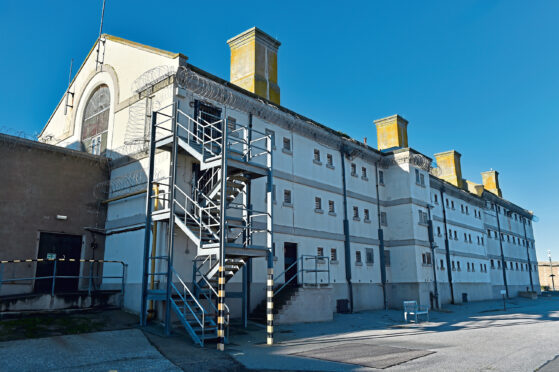
Known as Scotland’s Alcatraz, the bleak granite fortress of the former HM Convict Prison Peterhead was the site of 125 years of turbulent history.
Now a visitor attraction, Peterhead Prison Museum highlights the difficult work of the prison guards that served here from 1888 to 2013, and gives visitors the chance to experience what it is like to “do time” – without committing a crime!
Operations manager Alex Geddes says: “It was created next to the town’s Admiralty Yard to support the build of the Harbour of Refuge – or breakwater – after a lot of shipping was lost off the coast during stormy weather.
“The convicts were transported 2.5 miles every day to the granite quarry in the first state-owned passenger-carrying railway in Britain, where they spent their days breaking huge boulders by hand.”
These rocks were transported to Peterhead and used to build the breakwater at the Admiralty Yard.
“However, it was not the convicts that built the breakwater,” Alex says, “but the brave personnel who worked at the Admiralty Yard.”
After it was completed in 1956, prisoners began making mail bags, military uniforms and fishing nets.
Alex says: “It then became Scotland’s High Security Jail, where the most hardened criminals were held – with many rooftop riots staged there over the years.
“In 1987, officer Jackie Stuart was held hostage for four days on the roof of D-Hall before being dramatically rescued by the SAS (Special Air Service).”
This was the only time the SAS was used to end a domestic siege in mainland Britain. The museum’s audio tour takes you through the halls and corridors of the prison – but beware, as your sense of smell will be roused in certain parts of the buildings!
Visitors explore the cells, halls, kitchen, laundry, barber shop and shower block, before getting a glimpse of the grisly A-frame used to give the lash – used from 1888 to 1939.
There is access to the punishment block, before visitors experience the eerie “silent cell”. Measuring just 25 square feet, prisoners who could not be controlled were sent here, with nothing but a concrete mattress. It was last used in 1992.
Famous inmates included safe-cracker “Gentle” Johnny Ramensky – he became a Second World War hero after training commandos how to break into safes. Ramensky was dropped behind enemy lines in 1944 to target Nazi headquarters before D-Day.
Alex says: “Of course, once the war was over, he returned to his old ways and ended up back in Peterhead.”
After playing their “get out of jail free” card, visitors can look to the sea as the museum is also home to a former RNLI lifeboat, which was in active service from 1939-69. The vessel rescued 496 lives, and an exhibition explores 200 years of lifeboats and lifeboatmen in the town.

Enjoy the convenience of having The Sunday Post delivered as a digital ePaper straight to your smartphone, tablet or computer.
Subscribe for only £5.49 a month and enjoy all the benefits of the printed paper as a digital replica.
Subscribe